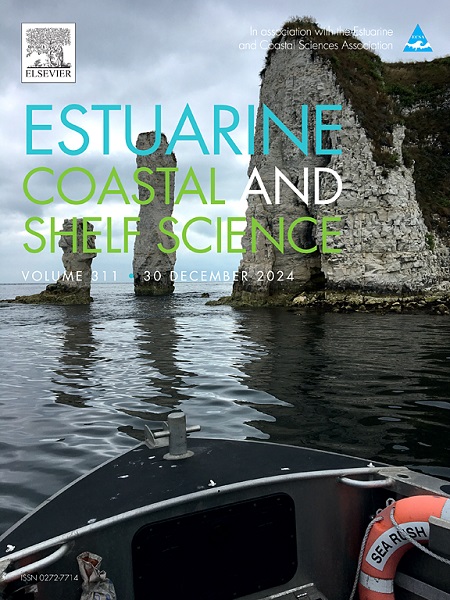Relationships between taxa assemblages and substratum types on cold-water coral reefs
IF 2.6
3区 地球科学
Q1 MARINE & FRESHWATER BIOLOGY
引用次数: 0
Abstract
Cold-water corals form complex three-dimensional reef structures. These reefs are most commonly formed by Lophelia pertusa, now synonymous with Desmophyllum pertusum, and are present in all of the world’s oceans. The reefs provide habitats for a range of species and are known biodiversity hotspots. Scale matters within the reef; there are differences in assemblages of taxa on and off the reefs as well as between different reef zones. Sites from nine reefs off the coast of Norway were investigated to determine whether taxa assemblages are related to the depth, substratum types, and/or geographical position of the reef. Data were obtained from video transects taken using the video platform CAMPOD as part of the MAREANO program. The environmental conditions and substrata present at the reefs were described and covariant factors identified. The multivariate statistical method, distance-based redundancy analysis (db-RDA), was used to identify relationships between the environmental variables and the taxa assemblages. The abundance of the live coral substratum type was found to be the most significant factor for determining the taxa assemblage present. Additionally, in order of decreasing influence, taxa assemblage was found to be influenced by depth, latitude, longitude, abundance of the coral rubble substratum, and abundance of the pebbles substratum. The sponge Mycale (mycale) lingua was associated with the living coral substratum. The anemone Protanthea simplex was found to be associated with sites where dead coral was the most common substratum type, yet it is also associated with high percentages of coral rubble. This association suggests that micro-habitats (e.g. coral rubble within the dead coral zone or vice versa) are important. Location was found to account for some of the variance in taxa assemblages, but this variable likely represents a proxy for other local environmental factors.
求助全文
约1分钟内获得全文
求助全文
来源期刊
CiteScore
5.60
自引率
7.10%
发文量
374
审稿时长
9 months
期刊介绍:
Estuarine, Coastal and Shelf Science is an international multidisciplinary journal devoted to the analysis of saline water phenomena ranging from the outer edge of the continental shelf to the upper limits of the tidal zone. The journal provides a unique forum, unifying the multidisciplinary approaches to the study of the oceanography of estuaries, coastal zones, and continental shelf seas. It features original research papers, review papers and short communications treating such disciplines as zoology, botany, geology, sedimentology, physical oceanography.

 求助内容:
求助内容: 应助结果提醒方式:
应助结果提醒方式:


